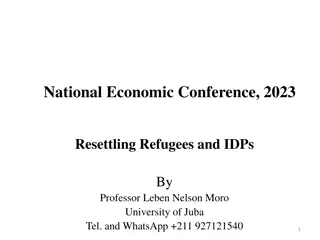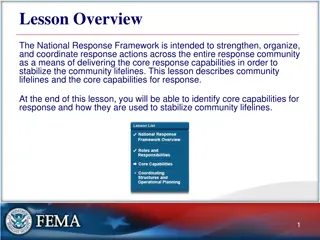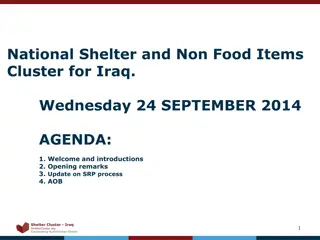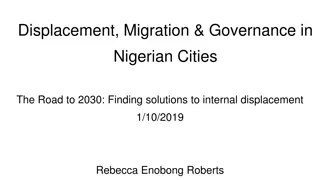National Responsibility and Response Towards IDPs
This presentation discusses the primary and complementary responsibilities of national authorities towards internally displaced persons (IDPs), emphasizing the importance of providing protection and humanitarian assistance. It examines challenges in preventing displacement, highlights the need for effective data collection and policy-making, and underscores the significance of IDPs' participation for more effective responses.
Download Presentation

Please find below an Image/Link to download the presentation.
The content on the website is provided AS IS for your information and personal use only. It may not be sold, licensed, or shared on other websites without obtaining consent from the author.If you encounter any issues during the download, it is possible that the publisher has removed the file from their server.
You are allowed to download the files provided on this website for personal or commercial use, subject to the condition that they are used lawfully. All files are the property of their respective owners.
The content on the website is provided AS IS for your information and personal use only. It may not be sold, licensed, or shared on other websites without obtaining consent from the author.
E N D
Presentation Transcript
National responsibility and response 1
Objectives Introduce the concepts of primary and complementary responsibilities Examine the foundation and implications of national responsibility towards IDPs Identify the steps a state needs to take to fulfill its responsibility towards IDPs Identify challenges to the prevention of displacement and responses to it 2
Primary and complementary responsibility Guiding principle three: National authorities have the primary duty and responsibility to provide protection and humanitarian assistance to IDPs. Guiding principle 25: Complementarity and collaboration State IDPs have the right to request and receive protection and humanitarian assistance from these authorities. International organisations organisations Regional CSOs Non- state groups IDPs 3
Sovereignty as responsibility Prevention Displacement response Framework on national responsibility National awareness Data collection Training on IDPs rights Legal framework National policy Institutional focal point on IDPs Durable solutions Resources Cooperation w/ intergovernmental organisations/regional organisations National human rights institutions 4
Data collection, registration and law and policy making Preparation: to understand the scale and characteristics of the phenomenon Ukraine: Resolution 509 Establishes a unified registration system Identifies the scale and scope of IDPs needs Determines access to state support Drafting: to devise measures that truly respond to IDPs needs Challenges Restrictive definition of an IDP Difficulties in accessing registration system Imposes time limit of six months Implementation: to allocate adequate resources Registration criteria should not lead to discrimination + Data protection in national legal system 5
IDPs participation Guiding principles 18 and 23 on protection and assistance for women and girls and 28.2 on durable solutions: IDPs have the right to participation Their participation makes responses more effective It also reduces dependency and facilitates reintegration Yemen organised focus groups and workshops with more than 3,600 IDPs as part of its law and policy- making process 6
Adequate resources Drafters should understand the resources available in advance Afghanistan s 2013 national policy on IDPs states that the ministry in charge of implementation should engage in resource mobilization and allocation, including through fund-raising from the national budget and the international community for the implementation of the national and provincial action plans . Law and policy development should be coordinated with annual budget cycles If a focal point is appointed, it should be provided with the financial resources it needs to fufil its role Azerbaijan revises its national budget for IDPs annually - 1995: $1 million allocated - 2005: $200 million allocated - 2007: $225 million allocated 7
Conclusions Political, economic and social factors may challenge preventive action and responses to displacement Understanding the causes of such issues allows the right institutional choices to be made Raising awareness of displacement, allocating resources, guaranteeing participation and ensuring coordination are signs of national responsibility towards IDPs The benchmarks of national response can be translated into concrete legal or policy arrangements 8























